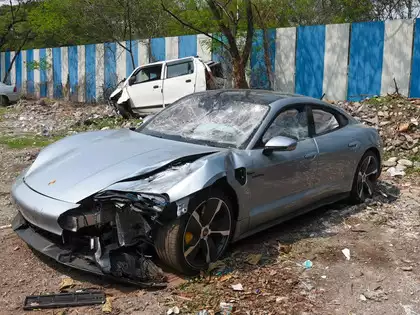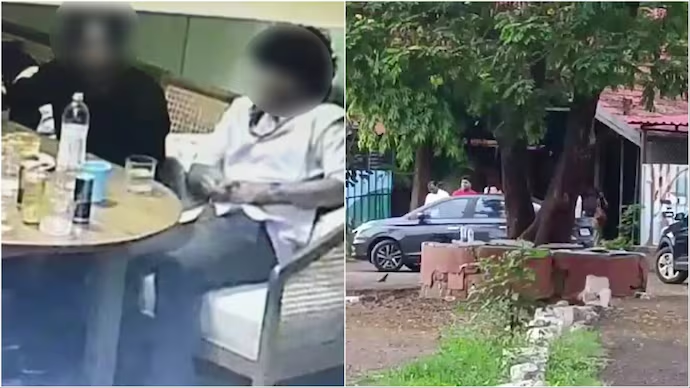The devastating event in Pune car crash that saw a fast-moving Porsche collide with a bicycle and kill two young engineers has captured the interest of the country and generated a lot of discussion. A new level of intricacy has been added to an already difficult case by the Bombay High Court’s recent order to free the driver, who is 17 years old. In-depth information on the occurrence, the ensuing court cases, and the High Court’s ruling’s consequences for juvenile justice in India are included in this article.

Pune car crash: A Tragic Night in Pune
The evening of May 19, Ashwini Kostha and Aneesh Awadhiya, two software engineers, were riding a bike when their Porsche, driven by a 17-year-old kid, crashed into it. The two engineers died at once at this Pune car crash incident. Witnesses stated that the teenage driver seemed to be quite drunk and was travelling with two pals. It was verified by CCTV evidence from a neighbouring tavern that the gang had consumed alcohol before to the incident.
First Legal Proceedings and Public Uproar
After the collision, the juvenile was placed under arrest; however, the Juvenile Justice Board (JJB) released him from detention after 15 hours. The boy’s bail requirements, which included writing a 300-word essay on traffic safety, working with traffic police for 15 days, and going to counselling sessions to address his drinking habit, were seen as too lax. The police sought to amend the bail terms in response to the public’s outcry over this seeming generosity.
Also Read :- Pune Car Crash: Legal Battle over Minor’s Confinement Sparks Debate
Contentious Remand of the Juvenile Justice Board
The juvenile was remanded to an observation home on May 22 after the JJB changed its original ruling. Growing public criticism and the seriousness of the charges—which included claims that the family tried to fudge the evidence and compel their driver into accepting responsibility for the collision—had an impact on this decision.
Intervention of the High Court: Proclaming the Remand Illegal
The boy’s paternal aunt contested the validity of the remand order in a petition submitted to the Bombay High Court. The petition was granted by the court, which was made up of Justices Bharti Dangre and Manjusha Deshpande. The court found that the JJB’s remand decision was unlawful and outside of its purview. The court highlighted the Juvenile Justice Act’s guiding principles, which place an emphasis on rehabilitation.
Equilibrium Between Accountability and Rehabilitation
The 2015 Juvenile Justice (Care and Protection of Children) Act seeks to protect, care for, and rehabilitate minors who are in legal trouble. The Act acknowledges that regardless of the seriousness of their offences, minors under the age of 18 should not be regarded as adults. Despite the sad result of his conduct, the High Court’s decision to release the juvenile driver and place him in the care of his paternal aunt serves as more evidence of this concept.
Investigations into the event found attempts by the teen’s relatives to conceal it, which gave the case a darker twist. The family’s driver was forced into making up a confession that he had driven the Porsche, and the police found that blood samples had been altered to change the teen’s test results. The boy’s grandpa and parents were arrested as a result of these activities, which complicated the court case even more.
Legal and Ethical Conundrums: Juvenile Rights vs. Public Sentiment
The decision by the High Court to free the teenager has sparked new discussions about how to strike a balance between the rights of juvenile criminals and popular opinion. While many contend that the seriousness of the offence justifies a more severe sentence, others think that the juvenile justice system’s core values—which place an emphasis on reform and rehabilitation—should be preserved.
Consequences for India’s Juvenile Justice System
The Pune vehicle accident case brings to light the difficulties and nuances of dealing with significant offences committed by children. The High Court’s decision establishes a crucial precedent by highlighting the necessity of upholding the fundamental values of the Juvenile Justice Act even in situations involving serious crimes. This ruling might impact cases and legal interpretations in the future, highlighting the significance of rehabilitation over retribution for juvenile offenders.
Conclusion
India’s juvenile justice system is complicated and fraught with flaws, as demonstrated by the deadly Pune automobile incident involving a minor driver. Reliability and rehabilitative principles must be balanced, as demonstrated by the Bombay High Court’s decision to release the adolescent despite the fatal ending and public uproar. Undoubtedly, this case will influence future discussions about juvenile justice and the treatment of young offenders in the nation as the legal processes and inquiry progress.
Disclaimer: The information provided in this article is based on publicly available sources and may not be 100% accurate.

